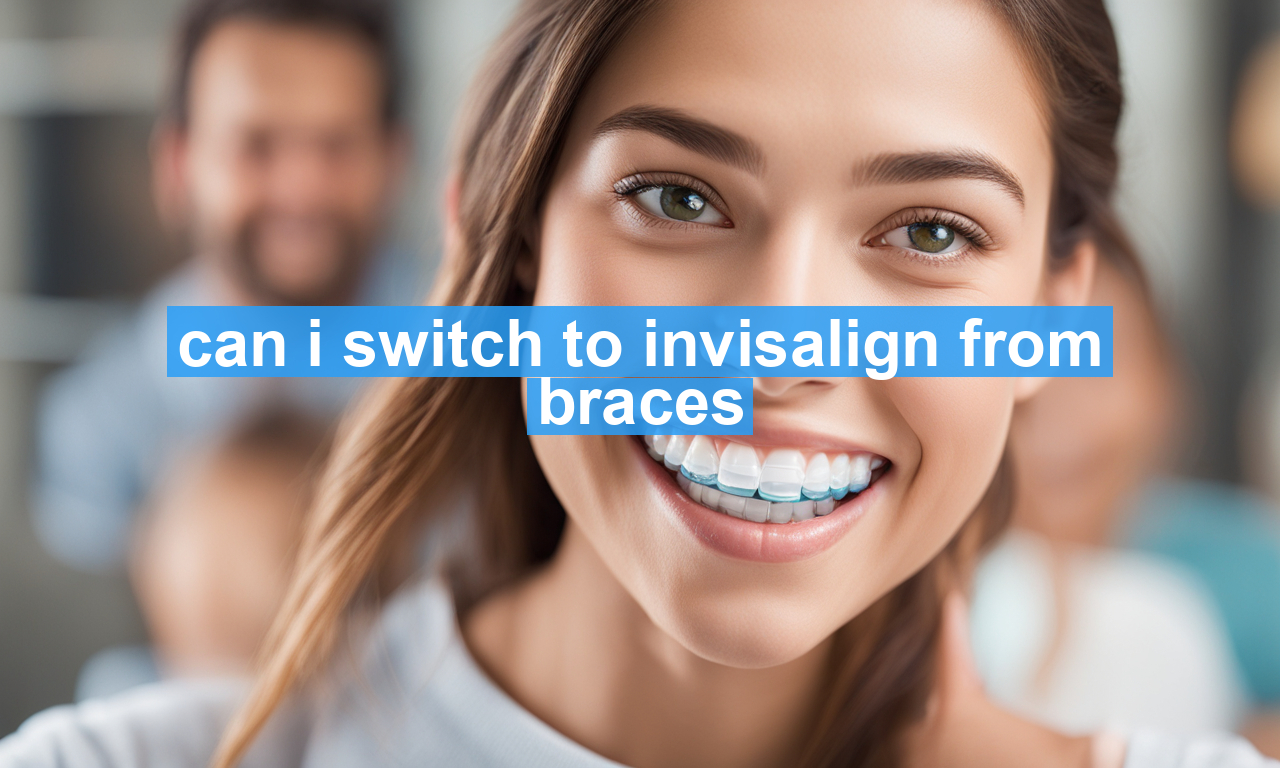Imagine finally deciding to straighten your teeth with braces, only to later realize that the metal wires and brackets feel cumbersome in your daily life. Perhaps you’ve heard of Invisalign, a modern and less conspicuous orthodontic treatment, and are now wondering if it’s possible to switch? You’re not alone—many people in braces are exploring this option, seeking the invisible aligner route for comfort and aesthetics. Switching from braces to Invisalign is a viable option, and understanding the process can help you make an informed decision that aligns with your desire for both a beautiful smile and more ease in your daily routine. In this article, we’ll delve into whether it’s feasible to make the switch, what the transition involves, and its potential benefits.
Why Switch to Invisalign?
Switching to Invisalign from traditional braces isn’t just about vanity. While it’s true that the clear aligners are much less noticeable than braces, there are several practical reasons to make the transition:
– **Comfort:** Without wires or brackets, Invisalign is generally more comfortable and less likely to irritate your mouth.
– **Hygiene:** You can remove aligners to brush and floss your teeth, leading to better oral hygiene.
– **Lifestyle:** Enjoy the freedom to eat what you like since the aligners are removable during meals.
Understanding these benefits, it’s no wonder that so many are curious about the possibility of switching.
Can You Switch from Braces to Invisalign?
Yes, you can switch from braces to Invisalign, but there are a few steps involved. First, consult with an orthodontist experienced in Invisalign treatment. They will evaluate your individual case, considering the alignment of your teeth, any existing appliances, and the stage you are at in your current treatment plan. In some cases, certain conditions or severe misalignments may not be suitable for Invisalign. However, with technological advancements, Invisalign can now handle more complex cases than ever before.
Consultation and Evaluation
An important first step is to schedule a consultation with an Invisalign-certified orthodontist. During this consultation:
– **Assessment:** The orthodontist will assess the current position of your teeth and any work done so far.
– **Imaging:** Typically, a 3D scan of your teeth will be taken to plan your Invisalign treatment.
– **Discussion:** Your orthodontist will discuss the feasibility of switching over and the expected duration of treatment with Invisalign.
You can find out more about what to expect during a consultation on the Invisalign website.
Understanding the Transition Process
Transitioning from braces to Invisalign involves removing your current appliances and transitioning to the aligners, which is a straightforward process, yet requires a bit of planning.
Initial Transition
– **Appliance Removal:** Your braces will be removed in the orthodontist’s office. This is generally a quick procedure, but it might take a little time to remove any remnants of adhesive from your teeth.
– **Fitting Aligners:** Shortly after having your braces removed, your first set of aligners will be fit to your teeth. Invisalign aligners are custom-made using the 3D scans taken during your evaluation.
Adjusting to Invisalign
– **Wear Time:** It’s crucial to wear the aligners for 20-22 hours a day to ensure effective treatment.
– **Initial Discomfort:** Some people experience minor discomfort as their teeth adjust to the pressure of a new aligner. This usually subsides within a few days.
For additional tips on adjusting to life with Invisalign, the Consumer Reports page can be a helpful resource.
The Long-Term Benefits
Switching from braces to Invisalign not only accommodates an aesthetic preference but can often enhance the overall experience of orthodontic treatment.
– **Discreet Treatment:** With clear aligners, you can undergo treatment almost invisibly.
– **Oral Health:** The ability to remove Invisalign for brushing and flossing means easier maintenance of oral hygiene, which can decrease the risk of cavities and gum disease during treatment.
– **Flexibility and Freedom:** Although they need to be worn most of the day, Invisalign aligners allow for special occasions where you can momentarily remove them without interrupting the overall treatment plan.
Conclusion
Switching from braces to Invisalign can lead to a more comfortable and seamless orthodontic experience. The decision involves careful evaluation by an experienced orthodontist, but it is entirely possible for many individuals. This option affords the opportunity for more discreet treatment while maintaining excellent dental health through easier care routines. If you’re considering making the switch, a consultation is the first step toward understanding whether this modern solution can work for you, giving you confidence and convenience on your journey to a perfect smile. Embrace the potential of Invisalign and discuss your options with a certified professional to enjoy not just the destination of a beautiful smile, but also the journey to getting there.
For further insights into how orthodontic treatments are evolving, feel free to explore resources such as WebMD and other authoritative dental health sites.

